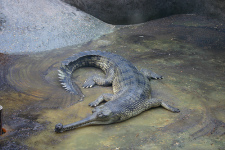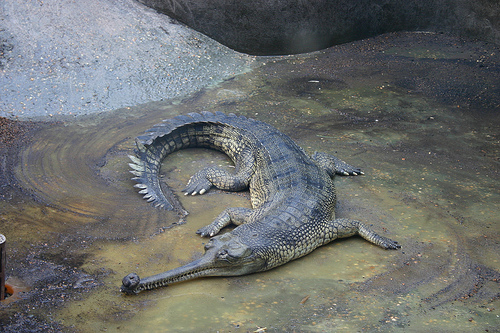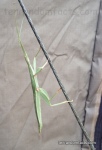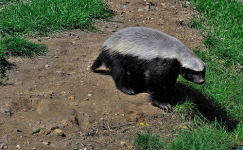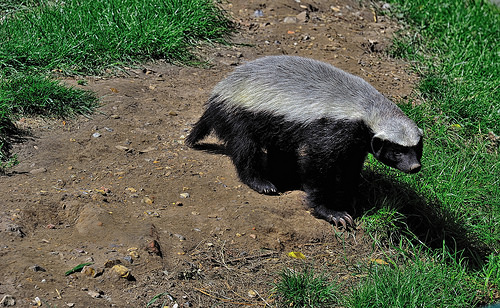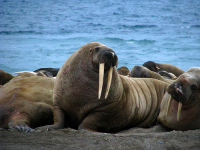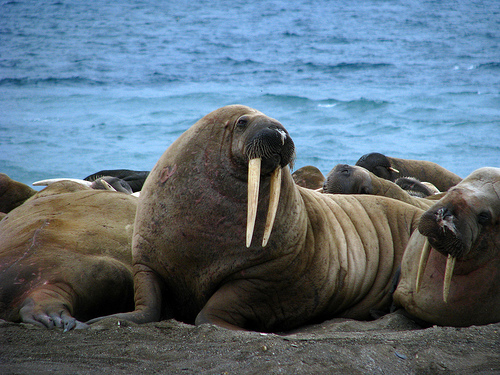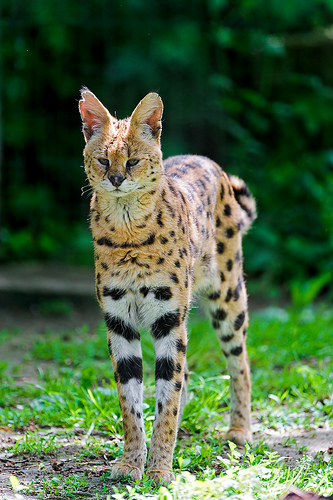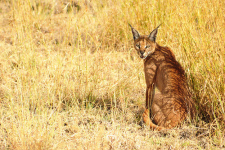
Don’t mistake the power of a caracal.
- Caracals are a species of wild cat, native to parts of central and southwest Asia, and Africa, and are found in savannah, semi-arid and woodland habitats.
- The Turkish words, ‘kara kulak’, meaning ‘black ear’, is where the ‘term ‘caracal’ originates from, and they have the scientific name Caracal caracal and are from the family Felidae, the family of felids or cats.
- Although they are only related to lynx by family and not genera, a caracal is also known as a ‘desert lynx’, ‘Asian lynx’, ‘Persian lynx’ and ‘African lynx’.
- Caracals range in length between 61 and 106 centimetres (2 to 3.5 feet), are 6 to 20 kilograms (13 to 44 pounds) in weight, and have a lifespan of 12 to 15 years.
- Caracals have notably long, erect fur on their ears, which is typically black, while its fur coat ranges from tan, brown to black in colour.
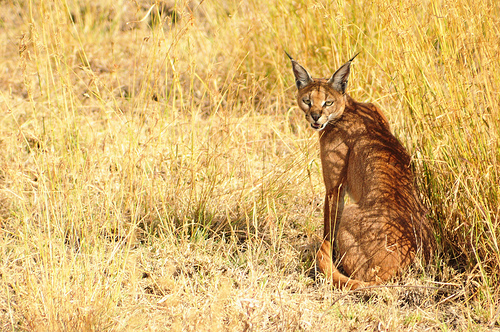 A Caracal
A Caracal
Image courtesy of Gopal Vijayaraghavan/Flickr
- Caracals usually live by themselves, and they mark their territory with urine to discourage others of the same species from entering into their zone.
- The diet of caracals mainly consists of small mammals, such as rodents, and birds, although they do stalk and attack larger animals like antelopes; and if their prey is airborne, they can leap high into the air to catch it.
- Female adult caracals typically give birth to between one to six kittens in an enclosed area, such as an already existing den, burrow or hollow, and the females raise them alone.
- Although their conservation status is classified as least concerned, caracals are negatively affected by the removal of habitats, causing limited populations in some areas, and they are a protected species in many countries.
- Caracals are preyed on by lions and hyenas; are occasionally kept as pets; and have previously been used in countries, such as India, for hunting purposes.
Bibliography:
Caracal, 2013, A-Z Animals, http://a-z-animals.com/animals/caracal
Caracal, 2014, San Diego Zoo, http://animals.sandiegozoo.org/animals/caracal
Caracal, 2014, Wikipedia, http://en.wikipedia.org/wiki/Caracal





